#la chimera icons
Explore tagged Tumblr posts
Text
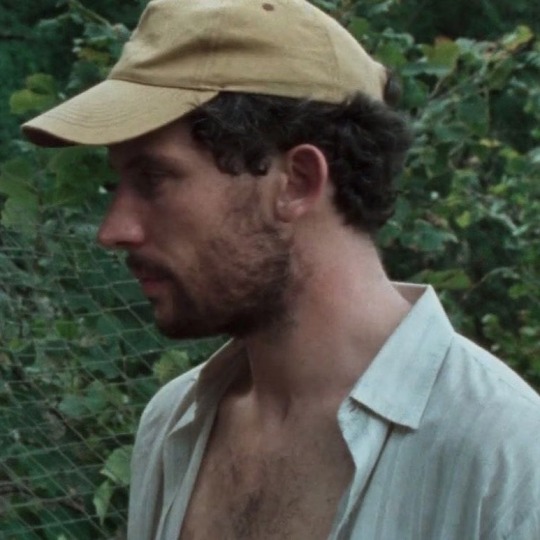



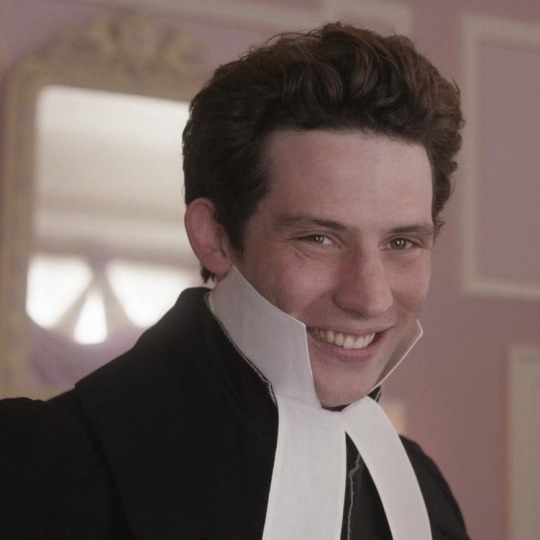


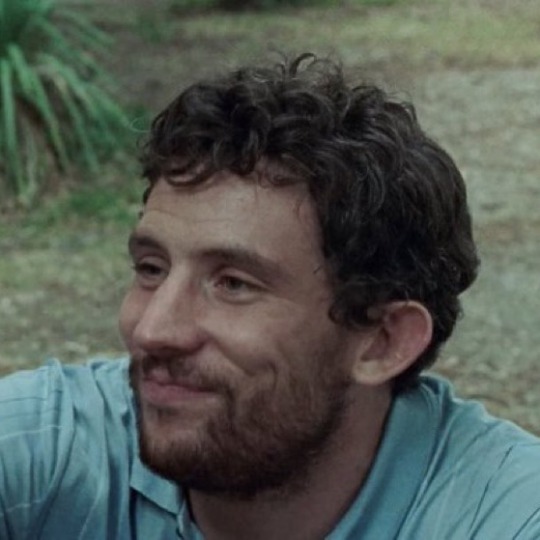

𓈒 ﹒ ☆ 𓂂 ˚ ☆ ꙳ * ࣭
josh o’connor icons
#josh o'connor#josh oconnor#josh o’connor icons#josh oconnor icons#icons josh o’connor#challengers icons#emma icons#la chimera icons#actor icons#male icons#boy icons#messy icons#icons#twitter icons#icons without psd#random icons
205 notes
·
View notes
Text
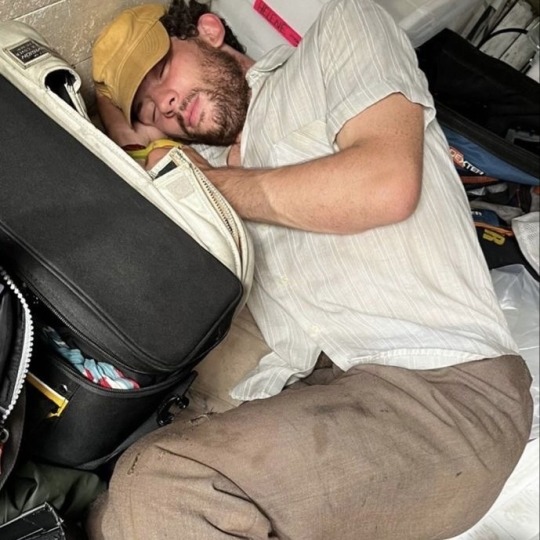

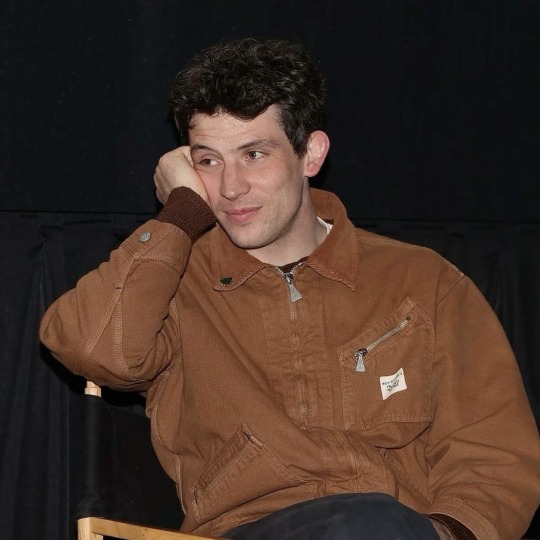

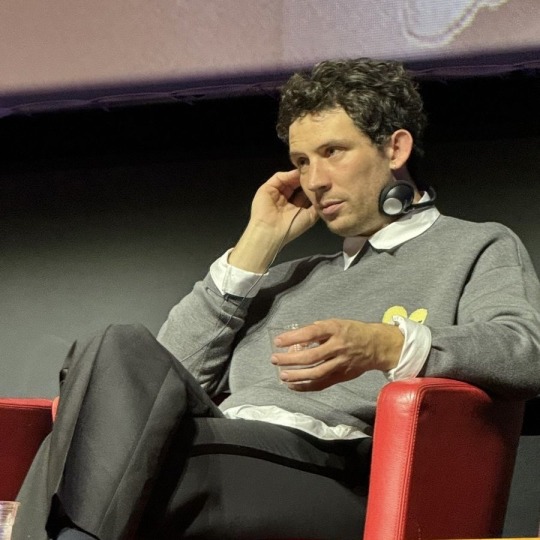




josh o’connor icons | like or reblog if you save
#josh o'connor#josh o’connor icons#emma icons#emma#la chimera#challengers#patrick zweig#patrick zweig icons#patrick tashi#twitter icons#twitter layouts#male icons
186 notes
·
View notes
Text
Not gonna lie, we’ve been watching YuYu Hakusho alongside the release of Delicious In Dungeon and uh
It’s been illuminating
Like on the one hand hoooooooboy you can taste the 90s animation techniques (and the Netflix version is somehow more strobey and seizure bait, and they’ve fucked random chunks of audio?? I have the dvds I can prove they’ve fucked around)
On the other hand… yeah, it really, really highlights what people have already been talking about with the Delicious In Dungeon - the pacing issues, especially with going shot for shot from the manga instead of embracing their own medium
Cuz I will stand by YuYu Hakusho being the best anime version of a manga I’ve ever seen. It’s true to the manga, but keeps up the pacing and fleshes things out by leaning more into the side characters, and particularly our audience surrogates, Koenma and George
The fights all pace well because we cut to the people watching them, so it’s not just repetitive punch punch punch shots (although we do get those)
Whereas this week’s episode of DunMeshi in particular…. Really suffered from skewed pacing on that fight
They had way too much time just standing around talking, both with the harpies and in between Falin’s attacks, and I’d bet even an anime-only fan could pick out which shots were literal panels in the anime because nothing moved to flow between them
Those shots of the separated groups especially; this is anime, not manga. Those people could have been moving, interacting, doing things instead of panning over a still
I get that it takes more time and money but this was a really significant fight and it does make me worry a little for season 2, because the red dragon fight also had some pacing problems (although to a much lesser degree) and season 2 is when the combat pops off
I really do appreciate them wanting to do a faithful interpretation of the manga and sticking close to Ryoko Kui’s vision, but anime is its own medium and by sticking too closely they’re not taking full advantage of that medium
You have more time to fill in an animated episode vs a manga chapter because your characters literally move and flow, and three panels of action happen in a second
They’ve been folding two or three chapters into each episode, but this week’s especially (ep 17) really played too close to that two chapter timeline, instead of taking out the important story beats and the time to fill and working out how to pace around that instead
(Funnily enough though, they actually nailed the exact same kinda pacing issue in the exact same episode for the Laios and Shuro fight; that one was fucking great, it was clear that action was ongoing even while we focused on other people, and it had good weight and emphasis despite being largely offscreen, just like the harpy fight should have been
I. Guess. They coulda put more work into that than the Falin fight? Cuz it’s a huge character moment but for fuck’s sake Chimera!Falin SHOULD be the bigger one! We the audience got hints but this was the REVEAL)
Honestly just… the 1000% disinterest in the harpy fight was jarring, and it leading immediately into the Falin fight that was basically stop motion without the time lapse didn’t help
Cutting to Marcille and Shuro on the shirt tear was fucking great though, chef’s kiss, someone out there is still watching over us, I just hope they work out a happy medium soon
I get that there’s lots of iconic and fantastic panels in the manga, I made a complete summary of every single chapter, but the anime shouldn’t be showing them as stills
The characters should be moving in between them, not snapping from one face to the next like a slide show
In a perfect world I’d also love some more little character asides and things a la YYH, but there just isn’t the same easy audience characters to cut to
But but but
Thistle reacting a la Koenma to some snippets of the bullshit in his dungeon would give me fucking LIFE he can’t be watching all the time for obvious plot reasons but I want him to find a veggie golem
I want him to see the kraken and find some leftovers and be searching for Delgal and plotting their dinner and wondering why he can smell something delicious and what is it and can he make that
Move the background stuff that got cut from the Tances’ episodes, cut to Namari and the twins hanging out and talking about leg guards, there’s SO MUCH supplemental material
It might be less one for one to the manga but it’d stop the weird dragging out and give us something more, something extra to appreciate the anime on its own merits
It’s nice to have an anime experience that is very close to reading the manga, but it’s something really special to have the anime shine and add to the experience on its own
Anyway next week is the shapeshifter and I’m so hype for that and wondering if they are gonna include just a smidge of meta knowledge since Kui did tell us whose impersonations are whose 👀
#dungeon meshi#delicious in dungeon#dungeon meshi spoilers#delicious in dungeon spoilers#yuyu hakusho#yu yu hakusho#dungeon meshi anime#spoilers for ep 17 of delicious in dungeon
26 notes
·
View notes
Text
guess who fucking finished EPISODE SIX
that’s right it’s meeee
okok my thoughts: SPOILERS AHEAD
IRIS MESSAGING OH MY GODS ITS SO COOL ITS SO FREAKINGG COOOOLLLL! !!!! like ARGGGG its like a really badly connected facetime i love it.
omgs luke “HOW DO YOU KNOW😳😳” that’s some interesting foreshadowing there uncle rick
CLARISSEEEEEEEEEEEE HAHAHAHAH I FORGOT ABOUT THAT PART IN THE BOOKS
“compared to the chimera on monday and medusa on sunday” percy’s so real for that idc. icon.
WHEN DID YOU TWO START ACTING LIKE AN OLD MARRIED COUPLE LMAOAOAOAOA how did luke know. mans knew from the very beginning
animals running amok in las vegas💀
i’m guessing the one with the giant lotus blossom on it annabeth, queen of calling out percy’s bullshit
LEVITATING IS PERFECT (not as perfect as poker face but still pretty good)
the graphic novel. counts. my bro ain’t wrong. the graphic novels count
THEY FIGURED IT OUT SO SOON IM SO PROUD OF THEM
I MAYBE SAW BIANCAS HAT like i saw in the background a girl with a green floppy hat ??? bianca is that you ???
are augustus and ferdinand gay ????
if i tell you something will you promise not to make fun of me and annabeths lil “dude” like percy ofc she’s going to make fun of you
IS THAT NICO INTHE RED JACKEF I SEE HIM I SEE HIM I LOVE HIM I LOVE HIM HES SO AWWWWW AW AW AW AW AW I LOVD YOU
^^^^my actual reaction as a saw a lil short kid with black hair wearing a red jacket
LIN MANUEL MIRANDA HAPPY BIRTHDAY FATHER
youre a really good guesser. lmao percy he’s a god😭😭
luke changes everything. like he always does.
poor bb looks so sad about his son :( i can tell he wants to go back and fix everything
i remember JUST FINE. GO QUEEN GO. LIKE YES YOU DO, TELL THE BITCHY GOD
and i feel a lot better about having stolen his keys. exactly !! wait what. this whole scene was so perfectly their dynamic
HAHAHAHAHHA PERCY DRIVING A CAR IVE NEVER LAUGHED HARDER HOLY HADES
imagine your first driving lesson being saving the world i think i would kms
HELP HIM HITTING THE WALL IM DEAD
grover getting his memory back is so cute 🥰🥰🥰
yes king go meet ur dad even though he’s not there
PREPARE FOR WAR OMGS WHAT …. i was NIT expecting that
this is not your fault. you are brave. you are strong. you made your father proud. me when the daddy issues kick in and i almost started crying
HEY NOW. THEY ONLY GAVE HIM THREE IN THE BOOKS. RESPECTFULLY, WHY DOES SALLY JACKSON GET TO LIVE INSTANTLY WHY IS THERE NOT A STRUGGLE !!! THATS PERCYS WHOLE REASON FOR BEING PISSED
#percy jackson#annabeth chase#percabeth#percy jackson show#pjo series#pjo tv show#crying#bc percabeth#percy jackon and the olympians#pjo#NICO NICO NICO#NICO DI ANGELO LADIES AND GENTS#he’s the best character#THE BEST CHARACTER HAS ARRIVED#BOW DOWN WHORES#HOW DO YOU FEEL TO BE IN THE PRESENCE OF GREATNESS#also my mom didn’t like this episode#which is kinda rude#she tried to fight me on who stayed in the underworld#she insisted it was grover bc of the movies#but i was like no bitch it was SALLY#anyways now she’s mad at me#also the episode disappointed her#like girl that was perfect#get a grip#get a life#stop hating on my fav show#that’s all folks#goodnight#dream demigod dreams
33 notes
·
View notes
Text
'...4.5 Stars
You could be forgiven for assuming that the new "Ripley" series on Netflix is a cash grab. Patricia Highsmith's Tom Ripley books (beginning in 1955 with The Talented Mr. Ripley) have already inspired a slew of film adaptations, and it's hard to top Anthony Minghella's 1999 version of the first book. Who didn't feel for Matt Damon's awkward social climber as he tried to claw his way into the world of the beautiful people, iconically represented by Gwyneth Paltrow and Jude Law?
But even die-hard fans of that film recognize how fundamentally it deviates from its source. Despite featuring a non-canonically older Tom Ripley (Andrew Scott), the new "Ripley" is a truer adaptation.
Scripted and directed by Steven Zaillian (The Irishman), the eight-episode Netflix series moves at a deliberate, detail-oriented pace perfectly suited to its midcentury setting. There are no action scenes or blockbuster flourishes to obscure the machinery of a well-constructed psychological thriller whose characters are all too human. The impeccable production design and the meticulously composed black-and-white cinematography of Robert Elswit (Oscar winner for There Will Be Blood) bring postwar Italy to life in all its grubbiness and glamour.
Unlike Damon's version of the character and like Highsmith's, this Ripley is something of a sociopath — low on affect and eager to pour himself into the mold of someone else, preferably someone richer. A small-time con man, he jumps at the all-expenses-paid trip to Italy offered him by a shipping magnate who wants someone to convince his wayward heir, Dickie Greenleaf (Johnny Flynn), to return to the fold.
But once Ripley arrives in the coastal village where Dickie lounges on the beach with his writer girlfriend (Dakota Fanning), he doesn't want to leave, either. What he wants is to be Dickie — to live Dickie's golden-boy boho dream better than Dickie himself can do. Ripley clumsily yet methodically works toward that goal, eliminating every obstacle in his way.
Scott's almost schlubby Ripley is the perfect antidote to the glamorized killers of series such as "Dexter." For him, murder has such a steep learning curve that it's a comedy of errors. With forensic technology in its infancy, he's often less talented than just lucky. Ripley honed his criminal cred in Highsmith's four subsequent books about him, however — and, with any luck, the series will explore that evolution in a second season...'
#Ripley#Netflix#Dickie Greenleaf#Johnny Flynn#Dakota Fanning#Marge Sherwood#Patricia Highsmith#The Talented Mr Ripley#Andrew Scott#Anthony Minghella#Jude Law#Matt Damon#Gwyneth Paltrow#Steven Zaillian#Robert Elswit
3 notes
·
View notes
Text
[ad_1] The 29th edition of the European Union Film Festival , which will travel across New Delhi, Kolkata and Hyderabad, will run through November 7 and November 16. The festival, billed as an annual celebration of European cinema, will screen 26 award-winning films in 31 languages, offering a window into the society, culture, and people of the continent. Organised by the Delegation of the European Union to India, in collaboration with the Embassies of EU Member States and regional partners, EUFF will kick off in New Delhi and will be hosted across three iconic venues in the national capital: India Habitat Centre, Instituto Cervantes, and Goethe-Institut / Max Mueller Bhavan. The gala will showcase films, including “La Chimera” , “What A Feeling” , “Five & A Half Love Stories in an Apartment in Vilnius” , “Stairway To Heaven” , “Death is a Problem for the Living” , “Jim’s Story” , “The Last Ashes” , “Blood on the Crown” , “Afire” and “How is Katia?” . Yile Yara Vianello, lead actor in “La Chimera”, Tomas Vengris, director of “Five & A Half Love Stories in an Apartment in Vilnius”, and Pedja Miletic, producer of “Blood on the Crown” will also participate in the festival. Herve Delphin, the Ambassador of the European Union to India, said Europe and India are bound by a shared passion for cinema and storytelling, and EUFF is a vibrant celebration of this unity. “This year’s #EUFF2024 proposes to the Indian public a top selection of award-winning European films from renowned international festivals, offering a unique #WindowtoEurope through the cinematic lens. I invite you to EUFF 2024; feel free to walk into any screening, sit in the cinema dark room and embark on a luminous cultural journey of entertainment and reflection with a European touch,” Delphin said in a statement. Veronica Flora and Valerio Caruso, curators for EUFF 2024, said this year’s programme delves into the turmoil of the human soul and the often unfathomable complexity of daily life. “The 29th edition of EUFF India promises to take audiences on a cinematic journey, surprising them with new experiences by presenting a rich array of genres and languages. It explores the unexpected landscapes of the imagination, revealing the ghosts of the present, while celebrating humankind’s resilience and its relentless pursuit of love and collective fulfilment,” they said. EUFF will also feature films from other member states Belgium, Bulgaria, Cyprus, Czechia, Denmark, Greece, Hungary, Ireland, Latvia, the Netherlands, Poland, Portugal, Romania, Slovenia, Spain, and Sweden. [ad_2] Source link
0 notes
Text
[ad_1] The 29th edition of the European Union Film Festival , which will travel across New Delhi, Kolkata and Hyderabad, will run through November 7 and November 16. The festival, billed as an annual celebration of European cinema, will screen 26 award-winning films in 31 languages, offering a window into the society, culture, and people of the continent. Organised by the Delegation of the European Union to India, in collaboration with the Embassies of EU Member States and regional partners, EUFF will kick off in New Delhi and will be hosted across three iconic venues in the national capital: India Habitat Centre, Instituto Cervantes, and Goethe-Institut / Max Mueller Bhavan. The gala will showcase films, including “La Chimera” , “What A Feeling” , “Five & A Half Love Stories in an Apartment in Vilnius” , “Stairway To Heaven” , “Death is a Problem for the Living” , “Jim’s Story” , “The Last Ashes” , “Blood on the Crown” , “Afire” and “How is Katia?” . Yile Yara Vianello, lead actor in “La Chimera”, Tomas Vengris, director of “Five & A Half Love Stories in an Apartment in Vilnius”, and Pedja Miletic, producer of “Blood on the Crown” will also participate in the festival. Herve Delphin, the Ambassador of the European Union to India, said Europe and India are bound by a shared passion for cinema and storytelling, and EUFF is a vibrant celebration of this unity. “This year’s #EUFF2024 proposes to the Indian public a top selection of award-winning European films from renowned international festivals, offering a unique #WindowtoEurope through the cinematic lens. I invite you to EUFF 2024; feel free to walk into any screening, sit in the cinema dark room and embark on a luminous cultural journey of entertainment and reflection with a European touch,” Delphin said in a statement. Veronica Flora and Valerio Caruso, curators for EUFF 2024, said this year’s programme delves into the turmoil of the human soul and the often unfathomable complexity of daily life. “The 29th edition of EUFF India promises to take audiences on a cinematic journey, surprising them with new experiences by presenting a rich array of genres and languages. It explores the unexpected landscapes of the imagination, revealing the ghosts of the present, while celebrating humankind’s resilience and its relentless pursuit of love and collective fulfilment,” they said. EUFF will also feature films from other member states Belgium, Bulgaria, Cyprus, Czechia, Denmark, Greece, Hungary, Ireland, Latvia, the Netherlands, Poland, Portugal, Romania, Slovenia, Spain, and Sweden. [ad_2] Source link
0 notes
Text
The Timeless Majesty of Notre-Dame Cathedral
The Timeless Majesty of Notre-Dame Cathedral Notre-Dame Cathedral, also known as Notre-Dame de Paris, stands as one of the most iconic and enduring symbols of French Gothic architecture. Located on the Île de la Cité in the heart of Paris, this medieval Catholic cathedral has witnessed centuries of history, art, and culture. Its construction began in 1163 under the direction of Bishop Maurice de Sully and was largely completed by 1260, though it has undergone numerous modifications and restorations over the centuries.To get more news about notre-dame cathedral, you can visit shine news official website.
Architectural Marvel Notre-Dame is renowned for its pioneering use of the rib vault and flying buttress, which allowed for the creation of its enormous and colorful rose windows. These windows, particularly the north and south rose windows, are masterpieces of stained glass art, depicting biblical scenes and saints in vibrant hues. The cathedral’s façade is adorned with intricate sculptures, including the famous Gallery of Kings, which features 28 statues of Judean kings.
The cathedral’s twin towers, standing at 69 meters (226 feet) tall, offer a breathtaking view of Paris. Visitors can climb the 387 steps to the top, where they are greeted by the iconic gargoyles and chimeras that have become synonymous with Notre-Dame. These stone creatures, designed to ward off evil spirits, add to the cathedral’s mystical allure.
Historical Significance Throughout its history, Notre-Dame has been the site of numerous significant events. In the 1790s, during the French Revolution, the cathedral suffered extensive desecration, with much of its religious imagery damaged or destroyed. However, it was restored in the 19th century under the supervision of architect Eugène Viollet-le-Duc, who added the now-famous spire.
One of the most notable events in Notre-Dame’s history was the coronation of Napoleon Bonaparte as Emperor of France in 1804. The cathedral has also hosted the funerals of several French presidents and other dignitaries. In 1944, the Liberation of Paris from German occupation was celebrated within its walls.
The Fire of 2019 On April 15, 2019, a devastating fire broke out at Notre-Dame, causing significant damage to the roof and spire. The world watched in horror as flames engulfed the historic structure. However, thanks to the heroic efforts of firefighters and the resilience of the cathedral’s stone construction, much of the main structure, including the iconic towers and rose windows, was saved.
The fire sparked a global outpouring of support, with donations pouring in from around the world to aid in the restoration efforts. French President Emmanuel Macron vowed to rebuild Notre-Dame, and restoration work began almost immediately. The goal is to restore the cathedral to its former glory by 2024, in time for the Paris Olympics.
Cultural Impact Notre-Dame has not only been a place of worship but also a source of inspiration for artists, writers, and musicians. Victor Hugo’s 1831 novel “Notre-Dame de Paris” (known in English as “The Hunchback of Notre-Dame”) brought the cathedral to the forefront of popular culture. The novel’s success led to increased interest in the cathedral and ultimately contributed to its 19th-century restoration.
The cathedral’s grandeur and mystique have also made it a popular setting for films, books, and other works of art. Its bells, immortalized in Hugo’s novel, continue to ring out over Paris, a testament to the enduring legacy of this architectural masterpiece.
Conclusion Notre-Dame Cathedral is more than just a building; it is a symbol of the resilience and creativity of the human spirit. Its architectural innovations, historical significance, and cultural impact make it a true marvel of the medieval world. As restoration efforts continue, Notre-Dame stands as a beacon of hope and a reminder of the timeless beauty that can be achieved through dedication and craftsmanship.
0 notes
Text
I finally made a list of my favourite episodes from s1-s3
season 1
1x8 "La festa della rosa" / "A Friendship Sundered" - Simply for the DRAMA
1x9 "Il tradimento di Riven" / "Betrayed!" – again for the DRAMA and omg driven so much driven
1x16 "Il nemico nell'ombra" / "Cold Spell" – because of Tecna’s ass scary nightmare
1x17 "Il segreto di Brandon" / "Secrets Within Secrets" – Diaspro??
1x18 "Addio Magix" / "The Font of Dragon Fire" - simply because I liked it best as a kid and I just love how Bloom gets ripped of her powers, ok?
1x19 "Attacco ad Alfea" / "The Fall of Magix"- hello? Army of decay? Darcy treating those little friends as pets? Iconic
1x22 "Il ritorno di Riven" / "Storming Cloudtower" - because Riven has to face his actions and it is underrated
season 2
2x2 "Il ritorno delle Trix" / "Up to Their Old Trix" – because Stormy finding out that switching something off is more peaceful than shatter it
2x4 "La Principessa Amentia" / "Princess Amentia" – because BRELLA
2x5 "Magico Bonding" / "Magic Bonding" – because the Trix are totally beating up the Winx and also Sky and Icy, okay
2x6 "Il matrimonio di Brandon" / "Runaway Groom" - because BRELLA and because Sponsus cute
2x10 "La cripta del codice" / "The Crypt of the Codex" – another favorite from my childhood days, plus icy is super smart and super deadly
2x17 "Gemellaggio con le Streghe" / "Twinning with the Witches" - because..cloud tower is just an aesthetic of its own kind ok
2x18 "Nel Cuore di Torrenuvola" / "In the Heart of Cloud Tower" – same above also the trix winning again
2x20 "Il villaggio delle Pixies" / "Pixie Village" – because icy healing livy’s head is cute and icy meeting amentia is two queens fighting
season 3
3x1 "Il ballo della principessa" / "The Princess' Ball" – because a whole new beginning and valtor doing shit and chimera being bitchy
3x2 "Il marchio di Valtor" / "Valtor's Mark" – still because valtor’s doing shit and because of stella being the center
3x10 "Alfea sotto assedio" / "Alfea Under Siege" – because the trix finally come home to cloud tower and valtor’s and griffin’s backstory
3x11 "Trappola per fate" / "A Trap for Fairies" – because turning Faragonda into a tree is the most ridiculous way of revenge valtor could get
3x22 "Il labirinto di cristallo" / "The Crystal Labyrinth" – I mean, do I have to write something to this? No? good.
And the third bracket proposal is
Winx Episodes Battle

Do you find this episode memorable? Or maybe it is so weird that it stuck with you? Should everyone watch it or not speak of it again? Anyway, send it to this bracket!
It can be from any season, I won't judge
You either give it's title, number (ex. S1E26) or describe it :)
The only episode that gets into the bracket by default is the first episode of the show!
You can submit through asks, comments or reblogs.
In the bracket:
- Season 1 Episode 1
21 notes
·
View notes
Text
The Most Evil Anime Villains
1) Johan Liebert (Monster): He is the eponymous monster after all. Where to start? He manipulated a large group of people onto killing each other when he was still a child. Killed his foster parents repeatedly and then hiring serial killers to kill every foster family he was with. Manipulates children to jump off buildings. Johan simply put is probably one of the most horrifying characters in anime and manga with how inhuman he acts. He commits acts of horrifying evil without really seeming to take pleasure in it. He tries to drive Dr. Tenma or his twin sister Nina to kill him because he believed that people were like him deep down. He also talks about wanting to be the only one left when the world ended.

2) Frieza (Dragon Ball franchise): Horrific sadism. Destroying life on planets to sell them to the highest bidder. Torturing the Namekians whilst collecting the Dragon Balls on that planet. Frieza is one of the most iconic anime villains for a reason.

3) Prime Minister Honest (Akame ga Kill!): Corrupter of the Emperor and the one behind all of the suffering in the empire.

4) Muzan Kibutsuji (Demon Slayer): Evil MJ. Created a system of consuming human flesh. He is responsible for many mass deaths including Tanjiro’s family as well as being responsible for Nezuko’s transformation into a demon. He is also ungodly short-tempered with killing a woman by transforming her into a blob with his blood despite her doing nothing to him. Or when he massacres the Lower Moon Demons.

5) Griffith (Berserk): Sacrifices his men to the God Hand for a chance of more power and rapes Casca in front of Guts’ eyes.

6) Ragyo Kiryuin (Kill la Kill): This woman is the worst mother in anime. Sacrificing her humanity to serve the Life Fibers, she conducted experiments on her own daughters before tossing one out under the assumption she was dead and sexually assaults/molests the other. Ultimately aims on destroying mankind with the Life Fibers.

7) Medusa Gorgon (Soul Eater): Another instance of a mother performing experiments on their child all as a means of unleashing the chaotic Asura.

8) Junko Enoshima (Danganropa): Orchestrated the death of her student council; kidnapped and lobotomized a teacher; attempting to make the other students commit murder-suicide, the list goes on. All so she could unleash the Ultimate Despair to bask in her victims’ suffering.

9) Light Yagami (Death Note): More in line actually with the manga, but Light shows that absolute power corrupts absolutely. He is a narcissist who starts off his murders by claiming them to be for the greater good, but then he takes a nosedive, killing people for petty reasons and in the end being nothing more than a psychotic serial killer with delusions of godhood.

10) Manager (Happy Sugar Life): A woman from the Princess Imperial restaurant who is a narcissist that kidnapped Mitsuboshi to rape him for a week to make him love her.

11) Shou Tucker (Fullmetal Alchemist): Not as powerful or prolific as other baddies in the series, but this asshole turned his own daughter into a chimera when his license was going to expire.

12) Grings Kodai (Pokemon: Zoroark Master of Illusions): Shocks a baby Pokemon to near death in front of its adoptive mother. He caused the destruction of the vegetation in Crown City 20 years ago and was willing to start it again.

#liebert#Johan liebert#monster#dragon ball#frieza#freeza#dragon ball z#akame ga kill#kill la kill#ragyo kiryuin#berserk#griffith#kibutsuji#muzan#muzan kibutsuji#demon slayer#soul eater#shou tucker#happy sugar life#death note#Light Yagami#medusa gorgon
289 notes
·
View notes
Note
(Don't want to sound clueless/out of loop, but unless you don't feel comfortable talking about him, who is Ray?)
((Ray’s current blog that he apparently logged into recently is @whitecanvased Here’s the callout we did about a year ago, but I understand its long and there’s a lot of trigger warnings for abuse, rape, racism, ect involved.
Keep in mind that the entire time that we knew each other, I was Ray’s friend, not his ex’s. I’m not just ganging up on him or picking sides in a messy breakup.
To just do a quick run down of the stuff i witnessed first hand (that is in the callout, I wrote the stuff from the rvb rpc,and about the icons that he didnt ever make me):
Claimed to have multiple mental illnesses, including autism, OCD, dissociative identity disorder (which he called multiplicity), AVPD, but when confronted with inaccuracies, he would accuse people of being ableist
Used to make his white Jewish character darker skinned because "white people aren't Jewish"
One of his rvb muses (Felix, a Canon genocidal murderer) he made a "Chimera" so that he could have two different skin tones and made that character both Korean and Japanese, playing into stereotypes on both ends
Had at least one Native American character who's two traits were Bloodthirsty Rage and Flower Power
Told a friend of mine with autism that they didn't have it and disregarded them and the way they expressed those traits
Forced that same friend to write a relationship as abusive even though they did not feel comfortable doing that
Forced different multiple friends to write rape kink and abuse
Drove multiple people offline or out of the rpc entirely for capricious reasons.
Insisted that his characters were never in the wrong because they were constantly victims even when others' characters had legitimate issues.
This is not an exhaustive list, and I know I’m forgetting something, but I know for a fact that if you called him on any of the problematic shit he’d do, you were instantly labeled racist/homophobic/transphobic/ableist. I know for a FACT that he hated being corrected because when I brought up to him (on anon because I’m not stupid) that Chimerism in humans usually only presents as like, two different blood types, he complained bitterly and refused to acknowledge it.
Now with the exception of giving his characters mental illnesses that he badly misrepresented and obviously racist toned traits, he mostly pulled his abuse of other people behind my back. I had very little idea that he’d been treating my irl best friend like garbage behind my back. I ALSO didnt know that he was talking shit about me behind my back to his ex. We communicated mostly over skype which means that I dont have 90% of our correspondences anymore, but I can promise I have some back to back messages where he said one thing to my face, and the complete opposite about it to Tony.
Now the big thing is that Ray made a lot of graphics and icons. Hell, the theme I have on @abitofafatass was made by him, and the icons that I use there and on @ceohargrove were made by him. I paid him to do that. I paid him to make me more icons and a theme for my Apollo blog basically when I first started the damn thing, and he never delivered. FOUR YEARS he strung me along, and I was willing to wait because I know how difficult it can be and I thought we were good friends and that he would produce something. He never did.
I did eventually get the money back, after an anon reminded him that technically that was non-delivery fraud, and I could sue for damages. I was not and still am not in a position to do so, especially because there are two different countries involved, but c’est la vie. He did end up paying. But even in his last message he was lying to me, saying that I “must not have seen” his message despite the fact that you can contact me at literally any time of day and I will respond. My email, my dms and tumblr ims are always open. Hell, I dont even turn off anon.
So this got long, but I put up with Ray for 5 out of the 6 years I’ve been rping, and like fuck him and anyone who’s defending him.
I do have screen caps that include timestamps if anyone would like to see, and some images of at least one of his old blogs from the good old Wayback Machine. You can also see his writing on Grif and Apollo since I dont delete shit ever.
10 notes
·
View notes
Photo


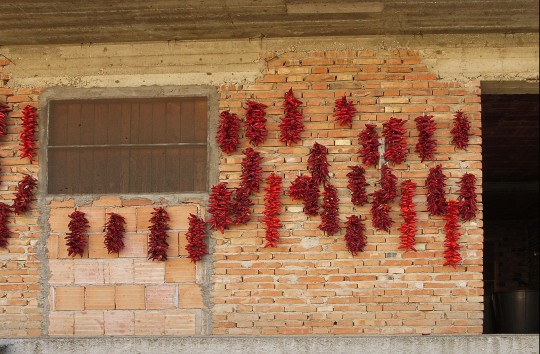
Il "non finito calabrese”, le ragioni di un paesaggio ferito
“Anche quando vado nelle altre città l'unica cosa che mi piace fare è guardare le case. Che bello sarebbe un film fatto solo di case” (Nanni Moretti nel film “Caro diario”).
Mi affaccio alla finestra. C’è la piana di Gioia Tauro e le isole Eolie che galleggiano sul Tirreno. Più in là l’infinito. Ma accanto, a pochi metri da qui, c’è il non finito del mio vicino di casa: tre piani di mattoni nudi senza intonaco, l’ultimo costituito solo da colonne di cemento armato esposte alle intemperie.
Ricordo quando da bambino da quel portone vidi uscire la figlia del vicino vestita in abito da sposa. La perfezione dell’acconciatura e il candore di quel vestito contrastavano col rossiccio dei muri grezzi, che all’epoca di certo non suscitavano in me particolari sensazioni. Era normale. Anche per me.
Siamo in Calabria. E sto parlando di quello che negli ultimi anni ha preso il nome di “non finito calabrese”, una presenza ingombrante quanto costante, che fa ormai parte di questo paesaggio.
A differenza delle opere incomplete di Michelangelo, in cui l’incompiutezza dell’opera è un valore, segno di totale libertà espressiva, queste costruzioni lasciate a metà, che sfigurano il territorio, non sembrano essere frutto di una coscienza estetica consapevole.
La casa è una delle icone più facilmente rappresentabili. Bastano solo quattro linee. Un quadrato con sopra un triangolo. Forse è il primo disegno che un bambino riesce a realizzare. In Calabria però è diverso e questa figura ha spesso contorni un po’ meno definiti.
A queste latitudini la fase di costruzione può prolungarsi in maniera indefinita. La casa può essere abitata già in fase intermedia. A volte viene terminata solo in parte, mentre il resto è lasciato in sospeso. Per sempre…
Sono un calabrese che ha trascorso gli ultimi quattordici anni fuori dalla sua regione. Dopo tanto tempo lontano dalla Calabria mi sono posto delle domande su questo fenomeno a cui non mi sono ancora abituato.
Sono sempre stato incuriosito, se non ossessionato, dalle ragioni che inducono a non terminare questi edifici, spesso abitati per metà. Sono ragioni economiche? Sociali? Storiche?
È molto facile cadere nella condanna e nella rabbia per un paesaggio spesso deturpato da questo cemento. Ma vorrei andare oltre l’indignazione e cercare le radici culturali di questo fenomeno.
In questa riflessione ho cercato di ascoltare alcune persone, calabresi come me, che hanno già affrontato questo tema, secondo la loro prospettiva.
La prima persona che decido di coinvolgere è Angelo Maggio, un impiegato delle Ferrovie della Calabria con l’hobby della fotografia, che da più di venti anni immortala il non finito nostrano. Mi perdo fra le foto del suo progetto “Cemento Amato”. Trovo immediatamente che i suoi scatti siano carichi di tutta quella decadenza e contraddizione che mi affascina e ripugna allo stesso tempo. Angelo mi racconta di quella volta in cui fotografò la statua del Cristo a San Luca, in un contesto di case di cemento e mattoni. Con sua grande sorpresa quella foto piacque molto agli abitanti di quel paese. Per loro era un normale contesto urbano. È proprio questo il punto centrale: come è stato possibile assuefarsi a questo codice architettonico?
“Il problema non è tanto che quelle case sono brutte” mi dice Angelo, “quanto che sono disabitate, o abitate per metà. Buona parte di queste abitazioni è stata realizzata tra gli anni ’70 e gli anni ’80. Ognuno cercava di costruire per i propri figli. Nelle culture più tradizionali si tende a non far spostare la figlia femmina dal nucleo familiare d’origine. Quindi si cerca di allargare lo spazio domestico per tenere unita la famiglia”. È forse questa la ragione che spinse a erigere questi appartamenti sovradimensionati poi rimasti in gran parte vuoti? La mentalità dei padri è stata questa: “Io intanto costruisco la struttura. Poi ognuno se la finirà per i fatti suoi”.
Scopro che anche il mio amico architetto Vincenzo Bernardi si è occupato di questo tema. Un altro calabrese emigrato, che lavora prevalentemente all’estero. Con lui iniziamo a parlare di viaggi, del fatto che se hai la possibilità di spostarti un po', riesci a vedere le cose con un altro occhio. Per Vincenzo “il non finito non è da bollare semplicisticamente come una vergogna, ma è un fenomeno da comprendere. Rappresenta una speranza. O almeno l’ha rappresentata. Sull’onda del boom economico si è cominciato a costruire con l’illusione di chissà quale chimera”.
Vincenzo mette l’accento sulla precarietà, in tutti i sensi, del territorio calabrese. “Un territorio spesso poco ospitale e che nel corso della storia è stato periodicamente devastato da terremoti e alluvioni”. È come se in Calabria si fosse storicizzata questa sfiducia, questa attitudine a non costruire “bene”, perché comunque prima o poi qualcosa renderà tutto vano.
Tramite Vincenzo, finisco per conoscere anche il punto di vista più antropologico di Angela Sposato. “Sono luoghi di drammaturgia che però esprimono il nostro essere calabresi. Prima che estetico è un problema dell’ethos. Siamo tutti un po’ dei non finiti, approssimativi, procrastinatori, tendiamo all’attesa. L’attesa è incantesimo, è delirio. Attesa di un avvento che non ci sarà mai”.
Un aspetto da considerare è tuttavia che in questi spazi disabitati ci sono piccoli segni di vita. Il non finito viene in qualche modo “goduto”. Diventa uno spazio in cui si mettono i pomodori a seccare, si fa la conserva, si stendono i panni. Spesso sono i cani a beneficiare di queste aree inutilizzate. Li senti abbaiare minacciosi verso i passanti dai piani alti. A volte diventano persino luoghi di divertimento. “Non dimentico quella festa di 18 anni in una casa non finita (il piano superiore finito nei minimi particolari ed il piano terra in mattonato). Fecero la festa al piano terra, in mezzo alle colonne di cemento armato con luci psichedeliche, buffet di tutto punto. Il contrasto era molto forte”.
Ma allora, che cosa ce ne facciamo di tutto questo non finito, che è un po’ l’estetica dominante del paesaggio calabrese? Bisogna abbatterlo? È una delle domande che rivolgo ad Emilio Salvatore Leo, architetto ed imprenditore. “Innanzitutto bisognerebbe indagare il fenomeno costruendo una tassonomia dei casi. Il non finito è un po’ questo sogno tradito di poter continuare a costruire i propri castelli. È opportuno considerare che una-due generazioni hanno investito le loro energie finanziarie (e non solo) per costruire tutta questa carica di bruttura. Alcuni di questi manufatti, all’interno di una nuova progettazione, potrebbero diventare dei “contenitori pubblici”, dei luoghi che, opportunamente trasformati, restituiscano questa dimensione della spazialità, dell’architettura come ricucitura del sogno collettivo.
Bisogna però spostare l’asset dall’autocostruzione ad una serie di professionisti che hanno gli strumenti culturali per rendere questa complessità non precaria, che la convertano in linguaggio che sia sovversivo e contemporaneo e che includano i moderni concetti dell’abitabilità”.
L’ultima persona con cui mi confronto è Vincenzo Filosa, un fumettista che è riuscito a coniugare il mondo dei manga con la Calabria. L’architettura calabrese finisce spesso nei suoi disegni. Vincenzo pone giustamente l’attenzione sul fatto che il non finito può essere “finito” dall’osservatore, con la fantasia. Può essere potenzialmente ancora tante cose. “Sono degli spazi vuoti su cui si può inventare qualsiasi tipo di storia. Crescendo ti rendi conto però che quei palazzi sono così perché l’emigrazione li ha svuotati, anzi ha fatto in modo che non venissero mai riempiti. Quelli sono gli edifici che la nostra generazione avrebbe dovuto abitare, ma che non occuperà mai”.
In Calabria ogni giovane si trova prima o poi di fronte ad una difficile, spesso dolorosa, scelta: rimanere o partire, cercare di sbarcare il lunario qui, fra mille difficoltà ma godendo di un territorio di grande bellezza, o cercare fortuna altrove, in luoghi più favorevoli allo sviluppo e alla valorizzazione del proprio talento.
Oggi questi edifici sono il segno tangibile di un abbandono, di un’assenza. È una delle sfaccettature, forse la più visibile, della famigerata e complessa “questione meridionale”.
La complessità è grande, soprattutto da un punto di vista antropologico. Il non finito oggi è paesaggio. Ci rappresenta. Fa parte della Calabria. È una categoria non facile da decifrare perché i mondi che richiama non sono solo estetici.
Il non finito spesso assume i tratti di una tensione verso il cielo, un’estensione dello spazio privato, di una sospensione del tempo. Questi totem di cemento che spuntano dai solai sembrano quasi fungere da congiunzione fra il finito e l’infinito, fra il privato e il pubblico, fra il dentro e il fuori.
Da bambino ero solito giocare nella casa dei miei vicini. Ricordo benissimo quei mattoni forati, la sensazione che mi davano al tatto quando mi appoggiavo al muro. Tra un mattone e l’altro si intravedeva il cemento. C’erano degli spazi segreti in quei muri. Delle fessure in cui un bambino poteva nascondere le sue cose più preziose.
E ricordo l’ultimo piano, senza pareti, sempre molto ventilato, che nel corso degli anni ha assunto le funzioni più disparate. Anche quella di pollaio. Oggi mi pare sia adibito a sola lavanderia. Eppure il piano del mio vicino di casa doveva essere diverso. La figlia avrebbe dovuto completare ed occupare quello spazio, invece vive in Valle d’Aosta e torna con i suoi figli solo in estate.
Oggi vedo questi ragazzini, dall’accento nordico, in vacanza aggirarsi per casa. Una casa che è loro. Ma loro forse non lo sanno.
Foto di Angelo Maggio (progetto “Cemento Amato”)
(presso Calabria)
https://www.instagram.com/p/CFHlq0jI5uZ/?igshid=1evw7pfw6rwx1
#iolafacciofinita#nonfinito#nonfinitocalabrese#incompiuto#incompiutocalabrese#calabria#meridione#sud#paesaggio#architettura#edilizia#cultura#blog#angelomaggio#cementoamato#intersezionale#scrivimiquandoarrivi
2 notes
·
View notes
Text
Day 9 - Research Using Beans
We woke up and decided we needed more tostadas. So we set out to the Coyocan market once more to eat, buy supplies for today’s research, and check out some of the other shops.
We saw some exquisitely crafted alebrijes, a Mexican style of art that goes back to prehispanic. Making these little creatures involves creating animal chimeras with and painting them with vivid colors.


After that, a woman selling fruits saw Glen and I staring curiously at some fruits we’d never seen before and stopped us. She cracked jokes and fed us large quantities of fruits we hadn’t tried, as soon as we’d finished one type she was slicing into a new fruit and giving us samples. We bought a mamey, an ataulfo mango, and a fruit whose name I forget but was intensely soft, sweet, round, and was one of the fruits that the Nahua people of this valley enjoyed.


She charged 90 pesos for the three pieces fruit, definitely overcharging, but we had such a good time chatting with her and having her show us around that we were happy to pay the turistas pendejos tax.
We reminded each other to ALWAYS ask for the price of something before we get it.
Then we drove to UNAM: “The National Autonomous University of Mexico (Spanish: Universidad Nacional Autónoma de México, abbreviated as UNAM) [which] was founded in 1551, making it the oldest in North America. It is the largest university in Latin America and was ranked the best in Latin America, Spain and Portugal, and 95 in the world according to a study conducted by The Times and released in 2005,” (www.topuniversities.com)
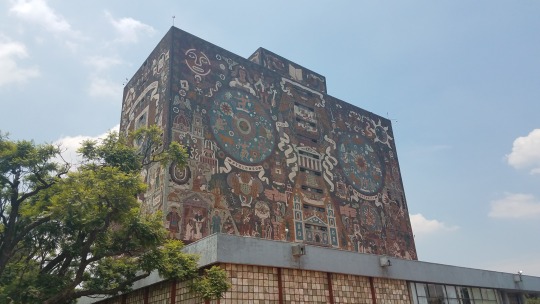
We decided that students here would probably have a better grasp of the historical La Malinche than the average person on the street we interviewed.
Our objective was simple: in the classroom, students have to decide whether La Malinche should be remembered as a hero, victim, or traitor.
While this question is not terribly nuanced, is rather reductive, and can be answered in many different ways looking at many different contexts, it’s a question that 7th grade students were able to latch onto.
It allowed them to judge her as a person and it forced them to understand the historical context she lived in for them to decide how her legacy should be seen.
So we made three baskets, put out a bowl of dry beans, and asked passersby to vote by placing the bean in the corresponding basket (hero, victim, or traitor). Many people stopped to talk with us, to give interviews, or simply to ask us questions.


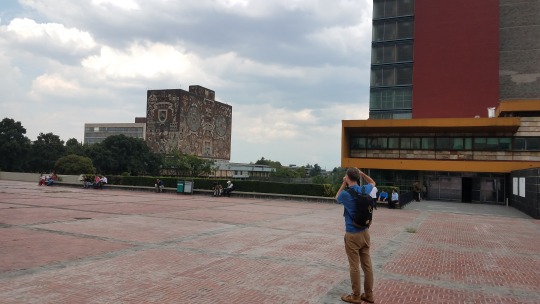
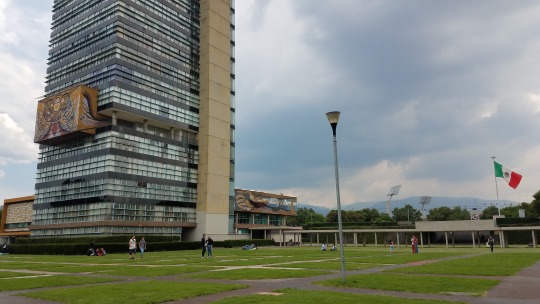
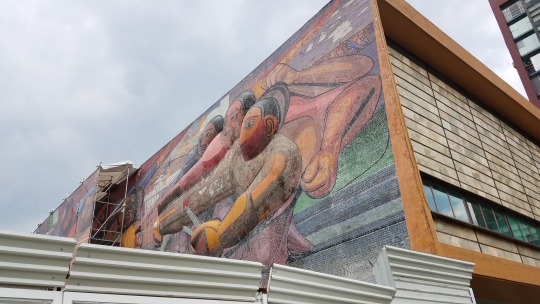
The results:
Hero: 14
Victim: 55
Traitor: 18
We got very interesting perspectives, but most people asserted the fact that her being a slave, and a woman, someone who was an object and property, was the strongest factor in considering her actions.
Many people also scoffed at her being a traitor. “A traitor to whom? The Aztec, the people she hated? Mexico didn’t exist yet!”
They echoed one of out learning objectives. Although she’s been seen as a traitor for a long time for helping the Spanish, we want our students to understand what it means to be a traitor then question who exactly she was betraying by helping the Spanish forge allies against the Aztec and translating for Cortes.
One woman commented on how that the strongest bonds and alliances we have are to our family, if she had a child with Cortes, why wouldn’t she be invested in protecting their success? Did this make her more aligned with the interests of the Spanish than that of the natives she lived and worked for?
What struck Glen and I the most, however, was long people stopped and thought before casting their vote, and the group think that came with it.
Often, a whole group would stop and ponder the question for minutes, before the first person placed a bean. More often than not it went in the “victim” basket and more often than not, the rest of the group followed suit, casting their vote for victim as well. Glen and I wondered if the victim vote was the safest. After all, calling someone a hero or traitor is a personal and subjective judgement. It’s taking a side. Maybe it’s easier to defer to the trauma and limitations La Malinche’s oppression rather than ascribe value to her enormously significant actions.
After spending hours there talking to people and counting the beans, we head back to Coyoacan to see the Frida Kahlo house and museum. We were very glad we bought a ticket ahead of time for a time slot since the line to enter wrapped around the block.
I guess Frida Kahlo is synonymous with Mexican culture nowadays, and it’s not a stretch to call her the most important icon of Mexican culture and history to the rest of the world, so the lines weren’t all that surprising.
It was masterfully curated, and we got to see her wardrobe that was hidden away until recently. It also showed their house as it was, preserving the original artwork, kitchenware, personal affects, and furniture.
It was an intimate look at the life of an artists I admire greatly.




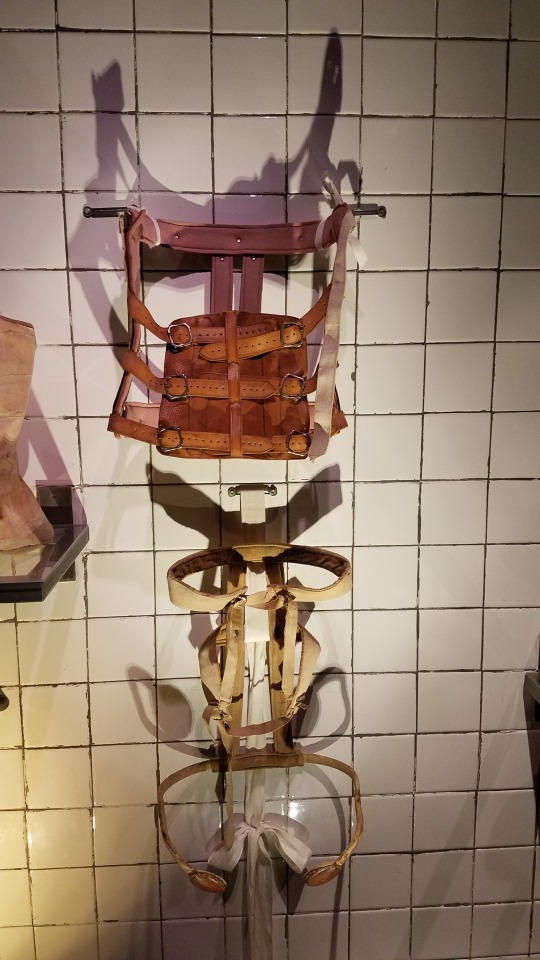
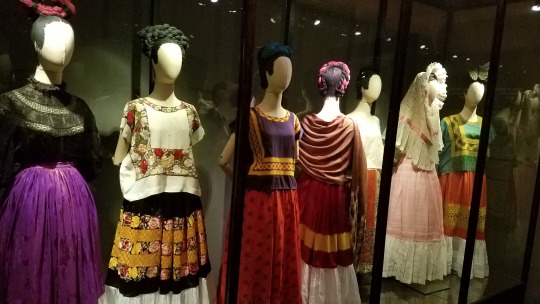

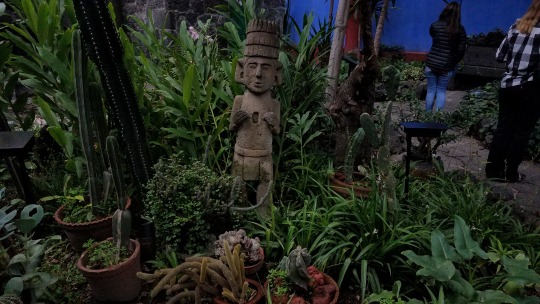
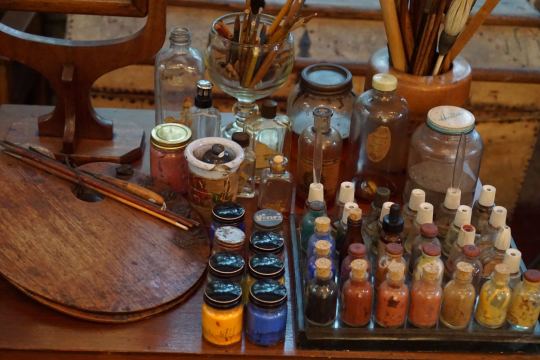

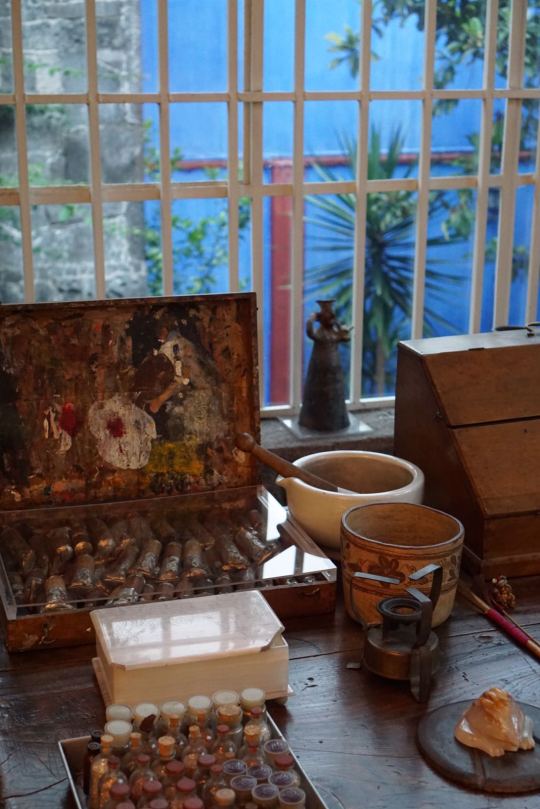
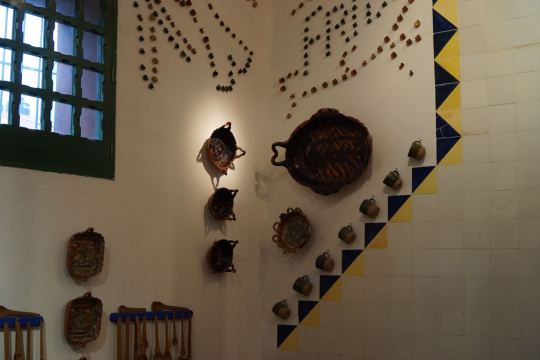




After that we saw yet another store that had La Malinche’s name!

We stopped by for some sangria soda, then we went to la Casa de los Tacos, a place Glen and I had been very excited about visiting.
They have delicious from scratch tacos, including a bunch of prehispanic tacos (mostly bugs and veggies) but also boar and veal, which were exquisite.
Here are the baja style fish tacos we started with. The ones wrapped in banana leaves were the boar tacos which were my favorites. They were served with a side of sweet caramelized chipole in a balsamic style brine. I ended up putting this on all the tacos and regretted nothing!

The food was so damn good I forgot to document the rest for y’all, but here are some pics I found on the internet, enjoy!
(Pics courtesy of TripAdvisor.com)


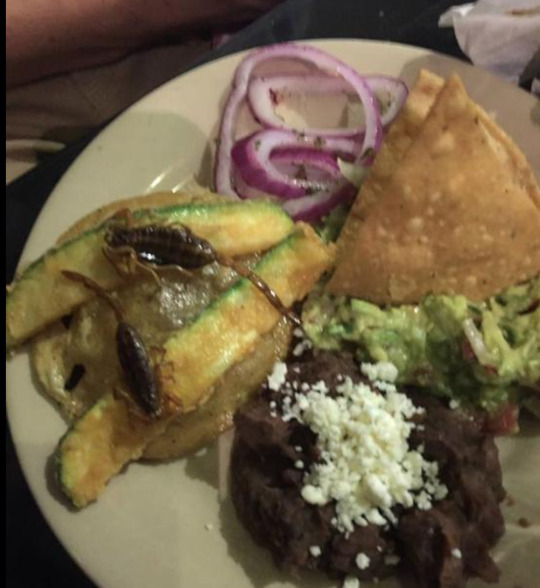




I still dream of those tacos...
#coyoacan#fft#fftmexico#lamalinche#malinche#malinalli#malintzin#mexicodf#mexicocity#casafridakahlo#museofridakahlo#casadelostacos#casadelostacoscoyoacan#unam
3 notes
·
View notes
Text
Titan Comics is thrilled to announce the release of a brand-new series, THE BEAUTIFUL DEATH, which debuts with a special cover by iconic comic book creator, Brandon Graham (Island, King City, G.I. Joe, Multiple Warheads)!
With its first issue hitting stores in September 2017, this post apocalyptic four issue mini series is written and illustrated by Mathieu Bablet (Shangri-la, Adrastée).
The apocalypse has been and gone. The age of humanity is at an end, and horrifying insect aliens from the depths of infinite space are the new masters of the Earth!
What does resistance mean, when there’s nothing left to fight for?
That’s what Wayne, Jeremiah, and Soham, the only survivors of the devastating invasion, struggle with – seeking a future that justifies their presence on a ruined world.
As they pick through the remains of human civilization, keeping out of reach of the bugs, none of them suspect that they are part of a much larger plan, one that involves another, unknown, survivor!
#gallery-0-5 { margin: auto; } #gallery-0-5 .gallery-item { float: left; margin-top: 10px; text-align: center; width: 33%; } #gallery-0-5 img { border: 2px solid #cfcfcf; } #gallery-0-5 .gallery-caption { margin-left: 0; } /* see gallery_shortcode() in wp-includes/media.php */
THE BEAUTIFUL DEATH is part of Titan Comics’ exciting line of translated comics, which brings the best of international comic books to a brand-new US audience. Previous titles include Snowpiercer, Elric, The Death of Stalin, Masked, World War X, The Chimera Brigade and Khaal.
“I really love Mathieu Bablet’s story. We made contact at the Angoulême Festival earlier this year, and I wanted to find a way to bring his work to an international audience,” says Titan Comics Brand Manager, Chris Thompson. “Getting Brandon to do a cover seemed like a no-brainer, with their similar aesthetic and approach. We’re so pleased with what he turned in, and I hope it entices people to check out this gorgeous interior work.”
Titan Comics’ The Beautiful Death is available to order from the upcoming July edition of Diamond PREVIEWS.
To keep up to date with news about our other titles, follow Titan Comics on Twitter, Facebook and Tumblr.
TITAN COMICS’ THE BEAUTIFUL DEATH DEBUTS WITH BRANDON GRAHAM COVER! Titan Comics is thrilled to announce the release of a brand-new series, THE BEAUTIFUL DEATH, which debuts with a special cover by iconic comic book creator, Brandon Graham (
0 notes
Link
Artist: Marlene Dumas
Venue: Zeno X, Antwerp
Exhibition Title: Double Takes
Date: May 27 – July 25, 2020
Click here to view slideshow
Full gallery of images, press release and link available after the jump.
Images:
Images courtesy of Zeno X, Antwerp
Press Release:
Zeno X Gallery is pleased to present the new exhibition by Marlene Dumas. Double Takes marks the 25th anniversary of the artist’s collaboration with the gallery and is her fifth solo exhibition at Zeno X Gallery.
double take (noun):
a delayed reaction to a surprising or significant situation after initial failure to notice anything unusual – usually used in the phrase ‘do a double take’
an act of quickly looking at something that is surprising or unusual a second time after looking at it a moment earlier
For more than thirty years already, Marlene Dumas has used her paintings and drawings to touch upon existential subjects that often refer to art-historical motifs and topical political subjects. She has been inspired by images found in magazines and newspapers as well as by personal photographs which she has taken of her loved ones. Through her work she tries to explore the social, psychological and emotional aspects of images.
The title Double Takes refers not only to the relevance of taking a second look at something, but also to the importance of ambivalence and of mutual influence. In addition, Double Takes suggests that the exhibition can be divided up into two themes. Some of the works were inspired by – and are also in the spirit of – Charles Baudelaire’s Le Spleen de Paris. Other works consist mainly of portraits of people from the artist’s immediate surroundings as well as of portraits of ‘icons’.
Some time ago Marlene Dumas was asked by the writer Hafid Bouazza to illustrate his Dutch translation of Charles Baudelaire’s Le Spleen de Paris. A few years earlier she had created pictures for his translation of Shakespeare’s Venus and Adonis, pictures which David Zwirner exhibited in New York in 2018 in the exhibition Myths & Mortals. While Shakespeare’s poem foregrounds eroticism, melancholy and the passing of time are central in the works now on display in the gallery.
Baudelaire’s most famous collection of poems, Les Fleurs du Mal, was immediately censored upon publication on account of its contents, which were considered immoral and scandalous. Le Spleen de Paris, which the poet worked on for ten years, appeared posthumously. It is closely related thematically to his previous publication: mortality, the hustle and bustle of city life, crowds, and the pleasures of the flesh are all dealt with in a morbid but humorous style.
Some of the paintings in the exhibition freely depict the characters and objects from these fifty prose poems, such as Le Désespoir de la Vieille and Le Joujou du Pauvre. The painting Bottle attempts to represent the contradictions so inherent to Baudelaire’s worldview:
In this reduced world, so full of disgust, just one familiar object consoles me: the phial of laudanum, old and frightful mistress – and like all lovers, alas, abundant with caresses and betrayals. (‘The Double Room’, translation Martin Sorrell)
Other paintings, such as The Making Of, Time and Chimera and The Origin of Painting, rather represent imaginary figures or abstract moods even, states of mind inspired by the stories. Chance played an important role in these large works: Dumas placed the canvases on the floor and let the paint interact with the surface in an unpremeditated manner. On account of their genesis, and in formal terms too, the works follow naturally from her ink drawings.
For its part, Jeanne Duval is a portrait of Charles Baudelaire’s Haitian lover and muse, to whom he devoted several poems in this series and who was famous for her luxuriant hairdos.
The other group of works consists mainly of portraits of people from the artist’s immediate surroundings as well as portraits of ‘icons’. For instance, Dumas painted the famous Nefertiti Bust, on display at the Neues Museum in Berlin. What is special about this bust are the colourful pigments on the porous limestone and the missing inlay in the left eye. Lady of Uruk depicts the ‘Mask of Warka’, which dates from 3100 BC and is believed to be one of the oldest representations of the human face. The marble face is in the National Museum of Iraq and probably represents a goddess.
Portraits such as Helena and Eden and Shèrkènt and Eden bear witness to the intimate bond between the artist and the portrayed: they are her daughter, son-in-law and grandson.
The painting reproduced on the invitation, De acteur, is a portrait of the Dutch actor Romana Vrede. In 2017 she won the ‘Theo d’Or’ acting award, whose winners receive a portrait by an artist of their choice. Vrede thus contacted Dumas, who ultimately made not one, but five portraits of the actor. Two of these paintings are included in this exhibition. They show Vrede’s versatility: The Performer shows the actor on stage, while De acteur emphasizes the androgynous expressivity of her face.
Lastly, the exhibition also includes works that connect both categories more explicitly. For instance, Hafid Bouazza is related to Baudelaire, but it is also a painting of a good friend. Likewise, the rat that features in Baudelaire’s poems can also serve as a symbol of the current pandemic. All paintings are related to different individuals: the writer, the actress, but also the gallerist. Dumas connects all the works in one way or another – to see how, you might need to do a double take.
Marlene Dumas (b. 1953 in Cape Town, lives and works in Amsterdam) has had solo exhibitions at Fondation Beyeler in Basel, Tate Modern in London, Stedelijk Museum in Amsterdam, Haus der Kunst in Munich, The Menil Collection in Houston, MoMA in New York, MOCA in Los Angeles, MOT in Tokyo, the Art Institute of Chicago, Centre Pompidou in Paris, MMK in Frankfurt, among others.
The catalogue published on the occasion of this exhibition presents an overview of all the works that have been shown during the 25 years of the artist’s collaboration with Zeno X Gallery. Since 1993 Dumas has presented five solo exhibitions in the gallery, respectively titled Give the People What They Want, Time and Again, For Whom the Bell Tolls, Twice (a duo exhibition with Luc Tuymans) and Double Takes. The catalogue also includes texts by the artist to accompany her exhibitions as well as newspaper articles and archival photographs.
Link: Marlene Dumas at Zeno X
from Contemporary Art Daily https://bit.ly/3dC713G
0 notes
Photo



Facts About Notre-Dame Cathedral
BY Allison C Meier - April 15, 2019
Constructed between the 12th and 14th centuries, Notre-Dame de Paris has centuries of French history built into its stone. The Gothic cathedral reflects the prominent role of Paris as an economic and spiritual center in the 12th century, and its scars from the French Revolution are reminders of its long connection with the monarchy—a connection that almost resulted in its demolition. Thousands of tourists enter its doors each day to photograph its rose windows and flying buttresses.
On April 15, 2019, a fire broke out at the cathedral, enveloping the iconic spire and much of the roof. The spire has now collapsed, and firefighters are still working to contain the flames. It's unclear what started the fire, though it could be related to ongoing renovation work. (You can find live updates from CNN here.)
As we pause to appreciate the historic Parisian structure, here are 13 lesser-known facts about Notre-Dame de Paris.
1. A Pagan City Lies Below The Cathedral.
The Île-de-la-Cité on which Notre-Dame de Paris now stands was once a Gallo-Roman city known as Lutetia. The cathedral may have been built right over remnants of a temple: Around 1710, pieces of a sculpted altar dedicated to Jupiter and other deities were discovered during an excavation under the choir (although it remains unclear if this is evidence of an ancient temple, or if the pieces were recycled there from another location). Additional architectural ruins found in the 1960s and '70s, many dating back to this ancient era, lie in the archaeological crypt located beneath the square just in front of Notre-Dame.
2. There's Some Recycled Architecture On Its Façade.
The Sainte-Anne Portal at Notre-Dame Uoaei1,
There are three portals on the western façade of Notre-Dame, each laden with sculpted saints and sacred scenes. One doesn't seem to fit, however—the Portal Sainte-Anne has a much earlier style than the rest. Its figures, such as the central Virgin and Child, look stiffer in their poses and less natural in their features compared to the other statues. That's because this tympanum, or semi-circular area of decoration, was recycled from a previous Romanesque church. A close examination in 1969 revealed that it was not originally made for this space, and had been adapted to fit the Gothic structure.
3. There's A "Forest" In Its Roof.
The cathedral contains one of the oldest surviving wood-timber frames in Paris, involving around 52 acres of trees that were cut down in the 12th century. Each beam is made from an individual tree. For this reason, the lattice of historic woodwork is nicknamed "the Forest."
4. Its Flying Buttresses Were Gothic Trendsetters.
The cathedral was one of the earliest structures built with exterior flying buttresses. They were constructed around its nave in the 12th century to lend support to the thin walls, after the need for more light in the incredibly tall church required larger windows, and thus greater supports. The exposed flying buttresses became an iconic aspect of Gothic design, and although there's some debate over whether Notre-Dame was the first church to have them, they certainly set the trend in sacred architecture.
5. Twenty-Eight Of Its Kings Lost Their Heads In The French Revolution.
In 1793, in the midst of the French Revolution, 28 statues of biblical kings in the cathedral were pulled down with ropes and decapitated by a mob. (King Louis XVI was guillotined earlier that year, and any iconography tied to the monarchy was under attack.) The mutilated stones were eventually tossed in a trash heap, which the Minister of the Interior dealt with by ordering the material be repurposed for construction. It wasn't until 1977 that the heads of 21 of these kings were rediscovered during work on the basement of the French Bank of Foreign Trade. Now they're at the nearby Musée de Cluny.
6. The Towers Are Not Twins.
At first glance, Notre-Dame’s two towers appear like identical twins. Closer examination reveals that the north tower is in fact a bit bigger than the south. As with all the elements of the cathedral, they were built over time, and reflect how the cathedral is more of a collage of architectural trends and leadership than the culmination of one person’s vision.
7. Its Bells Were Once Melted Down For Artillery.
The kings weren’t the only part of Notre-Dame destroyed during the French Revolution. The cathedral, like other churches around France, was transformed in the late 18th century from a Christian space and rededicated to the new Cult of Reason. All 20 of its bells—except the colossal 1681 bourdon called Emmanuel—were removed and melted down to make cannons.
While the bells at Notre-Dame were replaced in the 19th century, the new instruments were not as finely made as the older versions, and made a more dissonant noise when clanging. Finally, in 2013, a new ensemble of bells restored the cathedral to its 17th-century sound, with the deeply resonant Emmanuel still joining in the toll on special occasions.
8. Napoléon And Victor Hugo Saved It.
When Napoléon Bonaparte decided to have his 1804 coronation as emperor in Notre-Dame, the building was in bad shape. Centuries of decay as the city developed and changed around it, as well as the vandalism of the French Revolution, had left it on the verge of demolition. For years it had been used as little more than a warehouse. So when Napoléon declared its return to church use, and hosted his grand ceremony within his walls—an event in which he famously crowned himself—it brought Notre-Dame to new prominence.
Nevertheless, the coronation didn’t fix its structural deterioration. Then author Victor Hugo used the building as a personification of France itself in his 1831 novel Notre-Dame de Paris. (The book’s name is often translated as The Hunchback of Notre Dame, yet the hunchbacked bell ringer Quasimodo is not the main character; the central figure is Notre-Dame.) And Hugo vividly evoked its decrepit 19th-century state:
“But noble as it has remained while growing old, one cannot but regret, cannot but feel indignant at the innumerable degradations and mutilations inflicted on the venerable pile, both by the action of time and the hand of man, regardless alike of Charlemagne, who laid the first stone, and Philip Augustus, who laid the last. On the face of this ancient queen of our cathedrals, beside each wrinkle one invariably finds a scar. 'Tempus edax, homo edacior,' which I would be inclined to translate: 'Time is blind, but man is senseless.'”
The book was a success, and the momentum led to a major restoration overseen by architects Jean-Baptiste-Antoine Lassus and Eugène Viollet-le-Duc.
9. Its Monsters Are Modern, Not Medieval.
Some of the most popular images of Notre-Dame are from the perspective of its gargoyles or chimera (the carved monsters that don’t act as waterspouts). Few visitors would guess that the fantastic creatures now on the cathedral weren't there until the 19th century; they were added between 1843 and 1864 during the radical restoration overseen by Eugène-Emmanuel Viollet-le-Duc.
Hugo had described gargoyles extensively in Notre-Dame de Paris, and Viollet-le-Duc was reportedly inspired by this romantic vision of the past. A daguerreotype from before this overhaul shows a building more stark than the one we know today, with no beasts perched on its towers, its medieval gargoyles having long been removed. Unfortunately, many of the 19th-century gargoyles are now decaying; PVC pipes have taken the place of those that have been taken down for safety.
The gargoyles were far from the only fanciful addition by the architect Viollet-le-Duc. Among the 12 apostles he had installed around the new spire, he included himself as the face of Saint Thomas.
10. Its Spire Was A Saintly Lightning Rod.
If you look at a photo of the cathedral from before the fire, you'll spy a rooster on top of the spire (which sadly seems to have collapsed during the fire). This rooster was not a purely decorative bird. In 1935, three tiny relics—an alleged piece of the Crown of Thorns and some bits of Saint Denis and Saint Genevieve (the city's patron saints)—were secured inside the metal bird’s body. The idea, the story goes, was to create a sort of spiritual lightning rod to protect the parishioners within.
11. The Organ Is Thought To Be The Largest In France.
The Notre-Dame organ involves almost 8000 pipes (some dating back to the 18th century) played with five keyboards, making it the biggest pipe organ in France (although some claim that Saint-Eustache has a larger one). While there are some slashes on the wood of the organ loft—damage from the French Revolution, when its fleur-de-lis symbols were carved off—it was restored in 2013 to mark the 850th anniversary of the cathedral.
12. All Roads Lead To Notre-Dame De Paris.
Mostly overlooked beneath the crowds of tourists milling around outside Notre-Dame is a diminutive circular marker with an eight-pointed bronze star embedded in the cobblestones. It’s engraved with the words Point zéro des routes de France, and is the point from which distances are measured from Paris to other cities in France. It was placed there in 1924, although it had to be temporarily dislodged in the 1960s during the excavations for what was intended to be an underground parking garage. Those construction plans were thwarted when workers turned up architectural ruins—now kept in the archaeological crypt.
13. Bees Live On Its Roof.
On the Notre-Dame sacristy, adjacent to the cathedral, is a small hive of bees. It was installed in 2013, with Buckfast bees—a strain developed by a monk named Brother Adam and known for its gentleness—living in its hives. Their honey is made from the flowering plants in nearby gardens, including the Square Jean XXIII just behind the cathedral. According to The New York Times, the sweet stuff is given away to the poor.
This article has been updated for 2019.
http://mentalfloss.com/article/556629/facts-about-notre-dame-cathedral
1 note
·
View note